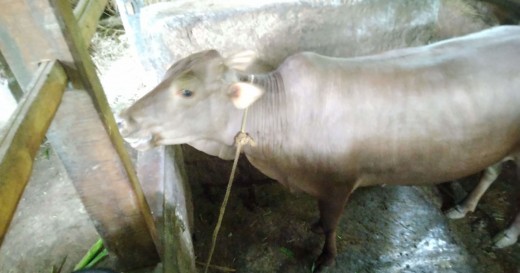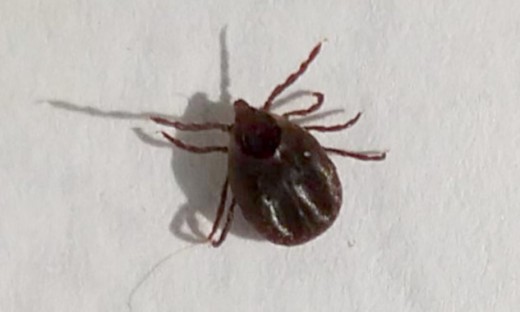Control Ticks on Pets – Natural and Chemical Remedies
Ticks great many
One fine evening I was walking barefoot on the home yard. I was astonished to see a lot of tiny eight-legged creatures panicking all over the yard. A battalion of tiny ticks was swarming. The army was marching aimlessly in all the directions. Those were newly hatched ticks. These blood-sucking insects lay hundreds of eggs each time and produce an enormous amount of next-generation ticks. If everything is favourable, the fittest will survive. These tiny ticks dwell underneath dry leaves, underneath the soil, or on some plants. Until they find a host on a favourable climate, they hibernate.
These ticks, which were new to the world were not yet aware of a two-legged creature like me to prey upon. So, I was saved at that time, but, happiness did not last long. These eight-legged monsters soon found the destination at our four-legged naive pets.
Pet animals are the main hosts
Yes, after a few weeks passed by, after my observation in the yard, our calf stopped eating. It had fever. Its ear pinna was having plenty of the ticks. Not only there, but all over the body and by the time we called the veterinarian for remedy, the calf left from this world. The ticks took the life of my calm and quiet pet calf. It was an occasion of great sorrow.
Pet animals become a host of these pests while dwelling by the locations inhabited by the pests. Immediately, these parasites stick on the pet hair root area and become ectoparasites. You will be fortunate, if you find these on your pets early, in two ways. First is that you can quickly take action to get rid-off these. Second important thing is that you can save your living rooms and your kids from getting affected by these parasites.
If unnoticed for long, the pets develop allergy, fever and in severe cases, they become acutely affected and succumb their life. So, the ticks are dangerous in numbers and action.
Earlier, I had heard, from my friends that those who go on trekking to the Sholas get a tick bite. Some tiny microscopic ticks even penetrate sub-cutaneously on the skin. These ticks cause allergic irritation and fever afterwards. Persons start scratching the skin repeatedly and develop rashes. It takes weeks to get rid of them even with medicines.

There is a famous anecdote - “Ticks jump out of the trees on you and suck your blood”
Ticks come from the soils and plants
Ticks predominantly live in the soil. During the winter season, these will not come to the surface. The rainy season is the one which is not favourable to ticks, mainly because, it is the season of their enemies, the fungi and water. Wherever there is plenty of water, the ticks get washed away, in other moist zones, the fungi infest its larvae.
Ticks come to our inhabitations through dry leaves, organic substances, vegetable and plant borne soils, etc. Since they do not have wings, ticks cannot fly. In contact with mud, plant debris, some wild fruits, etc. bring ticks to our domain. Once inside, they breed in crevices and corner lines, unnoticed manner.
When the dairy animals are left free for grazing, many things happen. Either the animal gets in contact with parasites, or the friendly birds pull out the already affecting ticks from its body. Animals also help each other by scratching, rubbing or licking for removing such pests. When the animals graze in the sun, they develop a lot of immunity against allergies.
Ticks regenerate in masses
Environmental imbalances and the wrong human interventions have to be blamed. Some of the fungi like green muscardine fungi destroy insects naturally. Similarly, birds such as crows, storks, etc. eat away the ticks. If we spray insecticides, antibiotics and toxic chemicals, these natural controls are also destroyed. The hardy ticks multiply enormously.
It is important to keep the food chain continuum for biological control and sustained life. When we target pests with agrochemicals, we are breaking the chain of host and prey nature control situation.
Taking care of the pets
To save the pets from ticks:
- Detect infestation very early
- Carryout eradication treatment
- Care for avoiding reinfestation.
We must care for the pets since they live with us, they care for us and we love them. We love, hug and kiss our pets like our kids. The problem is that we communicate with pests silently. They don’t tell us their problems. We need to perceive by intimacy and close observation. It is beyond just arranging the pet houses, feeding them and keeping them close. It needs careful observation, as the ectoparasites like flies, mites, ticks and lice are hidden beneath the fur. Be it a dog, cat, or a cow, we notice the problems only when these ticks suck blood and bulge, and become alarming.
First thing is that the pet owner must be aware of these problems and be prepared. He must have the right things to get rid-off the menace quickly. Hand-picking and removing is the best, but it may be impossible in most of the cases, due to the tiny nature of the parasites.
Pest control involves different types:
- Natural control
- Manual picking and burning,
- Herbal repellant control
- Chemical control
Natural control
When everything is scientific as per ecosystem principles, nature doesn’t allow a particular organism to gain superiority. Breeding of the organisms will need some of the favourable climatic factors also. When young ticks emerge, they get infested by destructive fungi, they get degraded by the fungi and perish.
A few varieties of cows and dogs will not attract parasites naturally by their pest avoidance. Instead, their sweat and odour deter the parasites, because of which they don’t like the animal. Or they do not emit enough of the pest luring pheromones. So, such animals naturally have comparatively fewer ticks problem.

Natural remedies
Horse gram paste, when smeared on the animal skin properly and left for a day makes some of the ticks fall off and relieves the animal from the allergic itch. Someone was using a little of camphor dissolved in castor oil for smearing on the animal body.
A little stronger ‘Agni Astra’ can control the ticks better. Agni Astra means missile of fire. It contains 500 g neem leaf paste, 150 g tobacco powder, 150 g garlic paste, 200 g green chillies paste mixed in cow’s urine and kept for ten days for the process. From this 150 ml is diluted to 2 litres and brushed on the pets to prevent the pests.
One of the most tricky situations is that the cattle or cat or the dog, won’t allow you to properly treat for ticks, as it feels irritation, pain and ticklish with discomfort and unpleasantness after medication. So, it tries to slip off from your hand and ultimately licks-off even the pet care solution smeared on its body. So, pet mouth cover is a must to prevent licking everything away. Dog mouth covers are available in the market. Cattle have to be tied with some bag to prevent licking-off.
Mild pesticides (miticides)
White oil and the coconut oil mixture is one of the old remedies to get rid-off the ticks from the pet’s body. Tick shampoos are the ones used regularly will in due course eliminate the ticks. After the bath, mild cypermethrin dusting formulations are used to prevent further recurrence. Cypermethrin pour-on liquid dispensers are available in the market, which is useful and are easy for applying. Application of mild talc form of clothianidin in the cattle shed corners and pet cabin crevices helps to deter the ticks. Many mild miticides will not kill the parasitic ticks, but help to caste off.
Those who have taken the tick bite knows, how persistent are the allergies due to its bite is. It keeps on itching for quite long.
More tick bite causes a high amount of allergy, fever and anaemia and ultimate death of the pets in acute cases. We should never allow such extreme levels and keep closely observing the pets regularly.
In a severe attack, we must resort to stronger pesticides and pesticides in combinations. These are such as deltamethrin and cypermethrin combinations, cypermethrin and amitraz combinations, sprayed all around the sheds and cabins, alternatively on weekly intervals, to kill the recurring emergence of these parasites emerging from the eggs. Spraying the sheds and cabins by imidacloprid and cypermethrin combinations also are used by some pet owners. Please check out for correct dosages with veterinarians and pest control experts collectively or pet care agencies with proper experience of control measures.
Weekly treatments, cleaning and hygiene are very much essential. These days oral anti-tick tablets are also available for the pests.
Prevention is better than cure
Since pets trust on us, we must use the right kind of preventive measure in time to safeguard is a pet lover’s responsibility. To prevent ticks from biting the pets, we must smear some repellant anti-tick hair oil. Similarly, a mite eradication sprays every week can help to overcome tick menace.
Storks or crows riding on the grazing animals is a rare scene now. This remains as an evergreen olden day memory.
Final words
Adult ticks lay hundreds of eggs. These eggs hatch by the end of summer and havoc throughout. Pet animals get easily attacked by ticks. Ear pinna and eyebrows are the easy places where ticks get attached. Removal from these parts is painful and may bleed as well. Never press and kill adult ticks, as these are the eggs inside to get thousands of hatched pests. Instead, dip the live ticks in alcohol. They can also be put on the fire to get rid-off the eggs as well.
Always a happy pet at home is enjoyable, as it enjoys happy living with you. Be careful, not to even accidentally allowing inside your ears, as it is highly painful and cumbersome to remove even with fine tweezers. Ticks also act as vectors of viral fever pathogens. Lyme fever is a severe side effect due to a tick bite in many people around the world. There is a long list of tick-related diseases. It is better to control the ticks wisely and stay away from getting in contact with any such diseases.
This article is accurate and true to the best of the author’s knowledge. It is not meant to substitute for diagnosis, prognosis, treatment, prescription, or formal and individualized advice from a veterinary medical professional. Animals exhibiting signs and symptoms of distress should be seen by a veterinarian immediately.
© 2019 Halemane Muralikrishna








